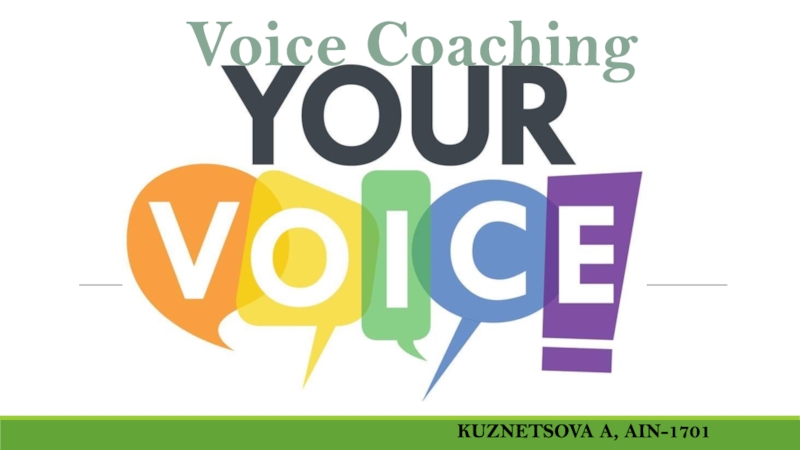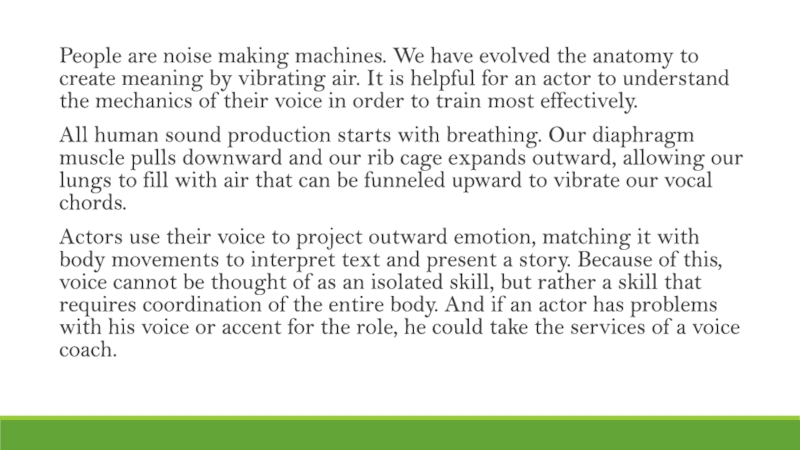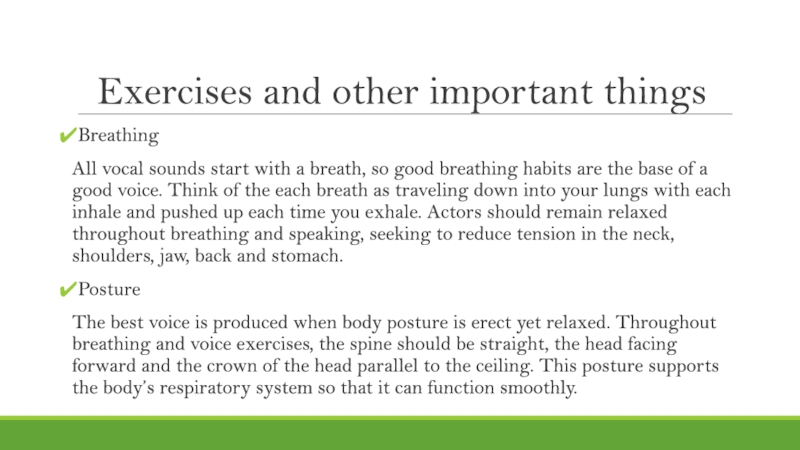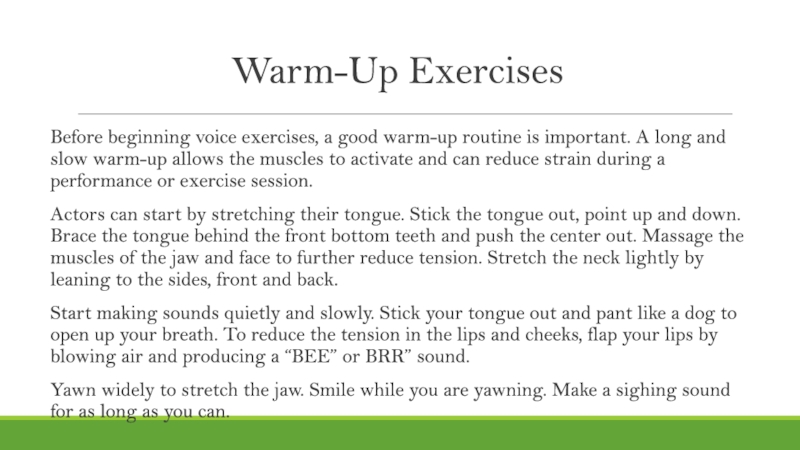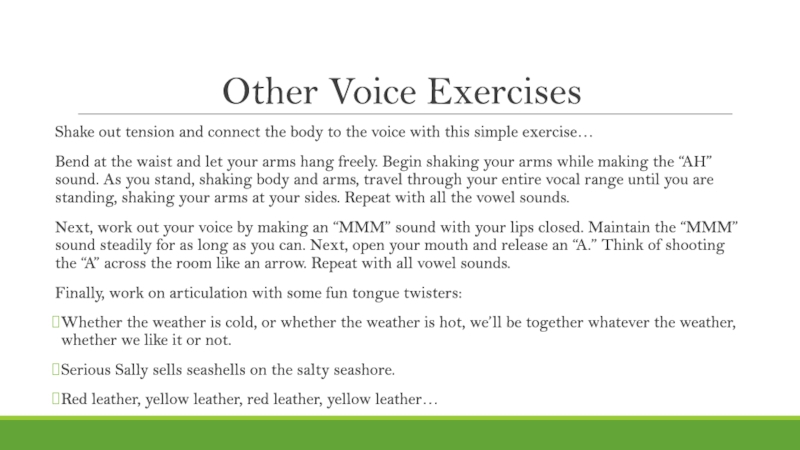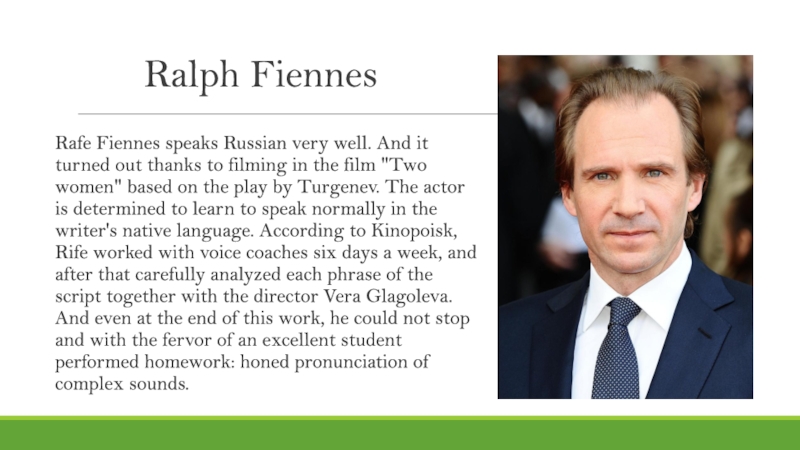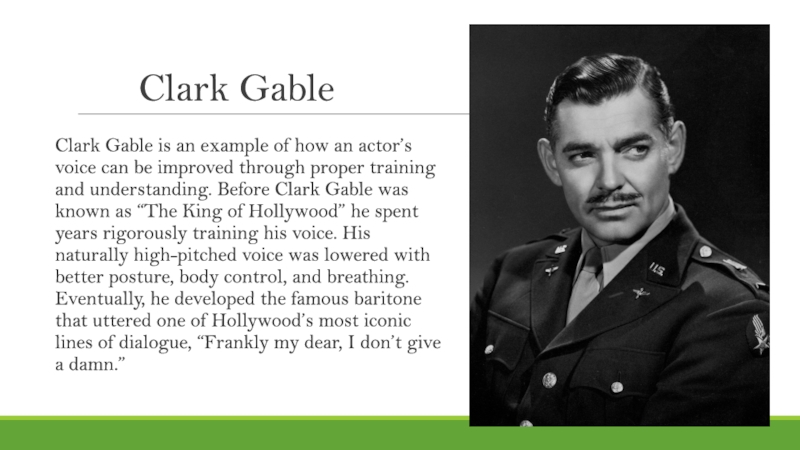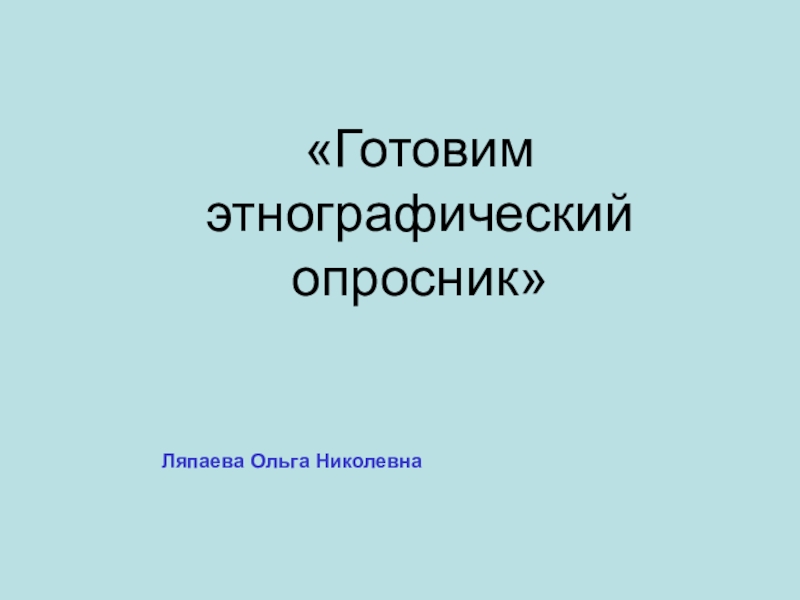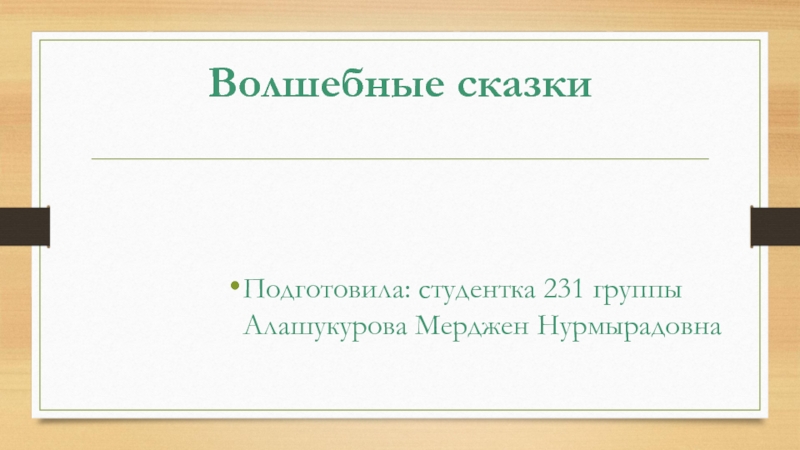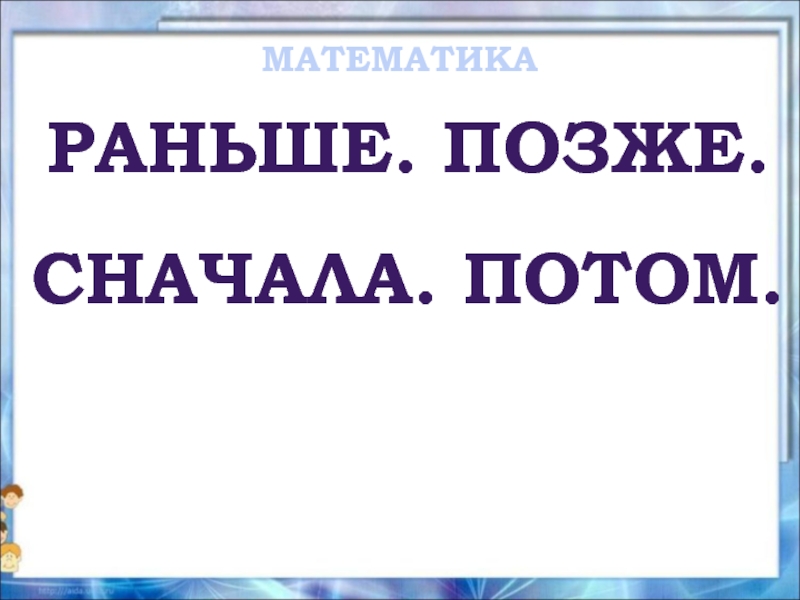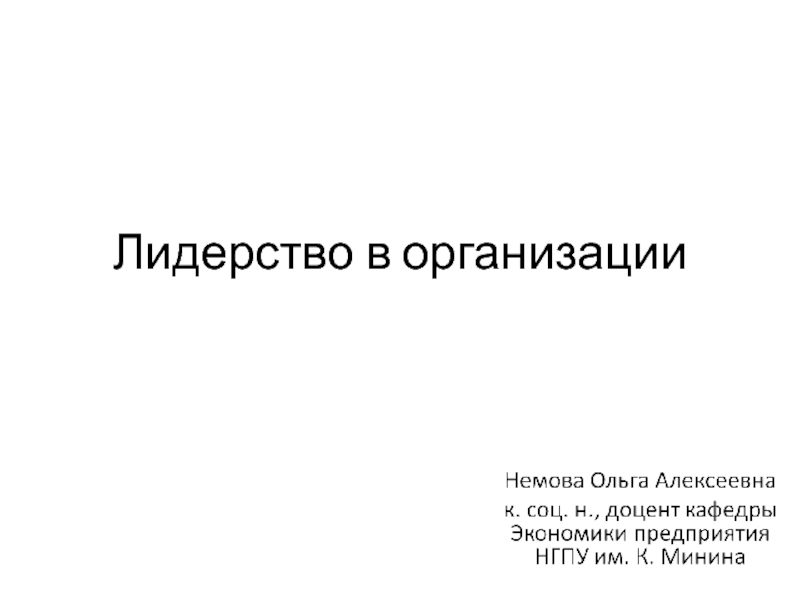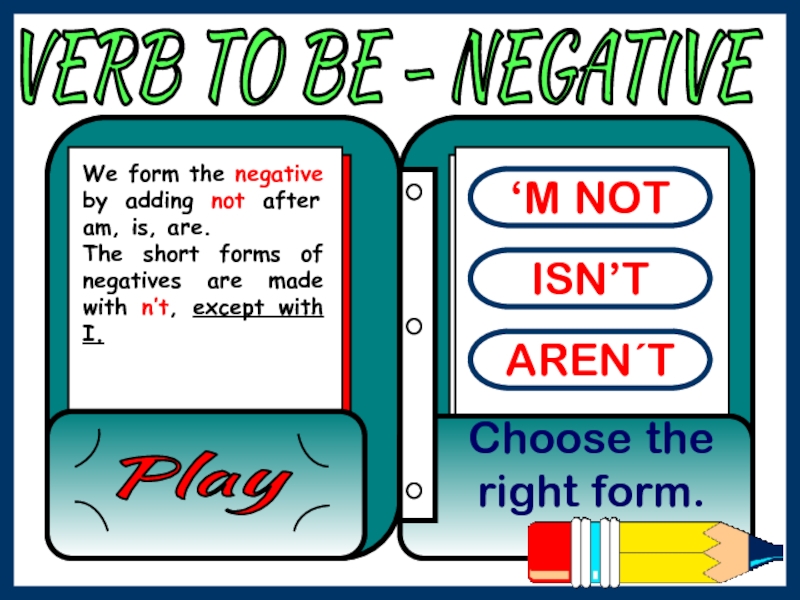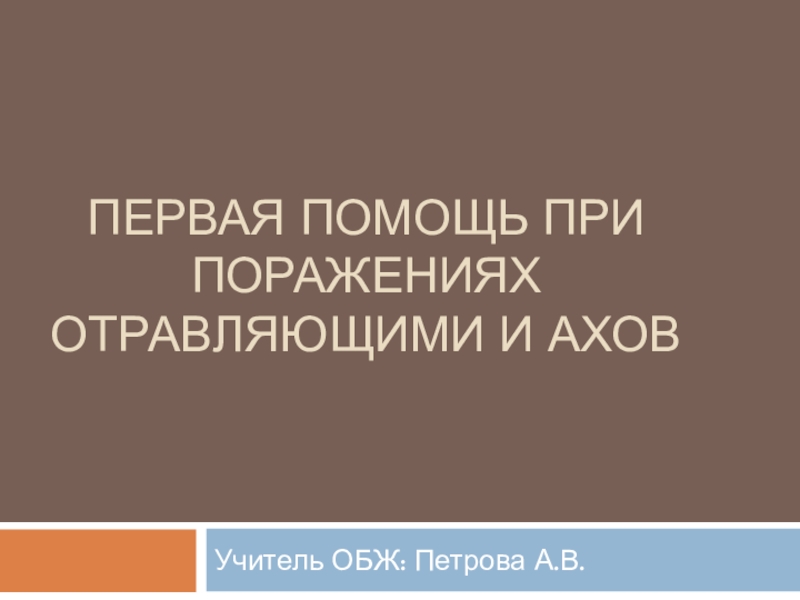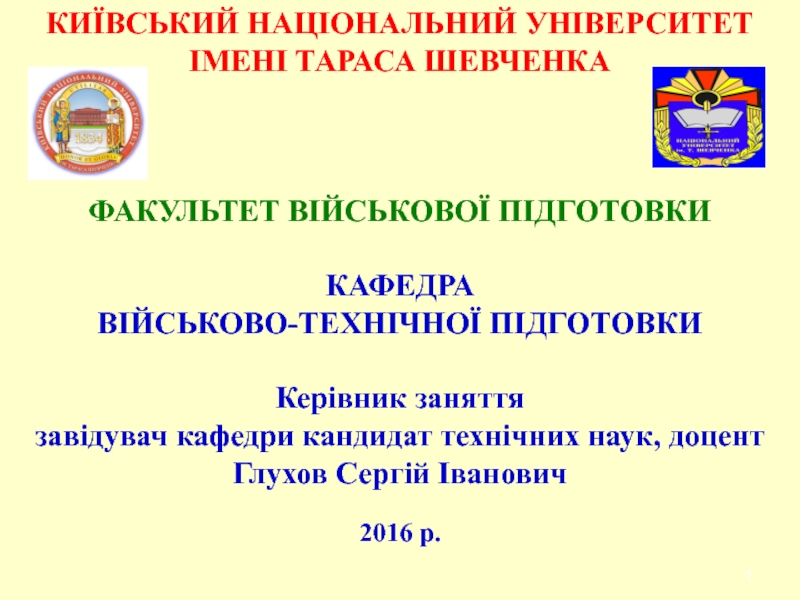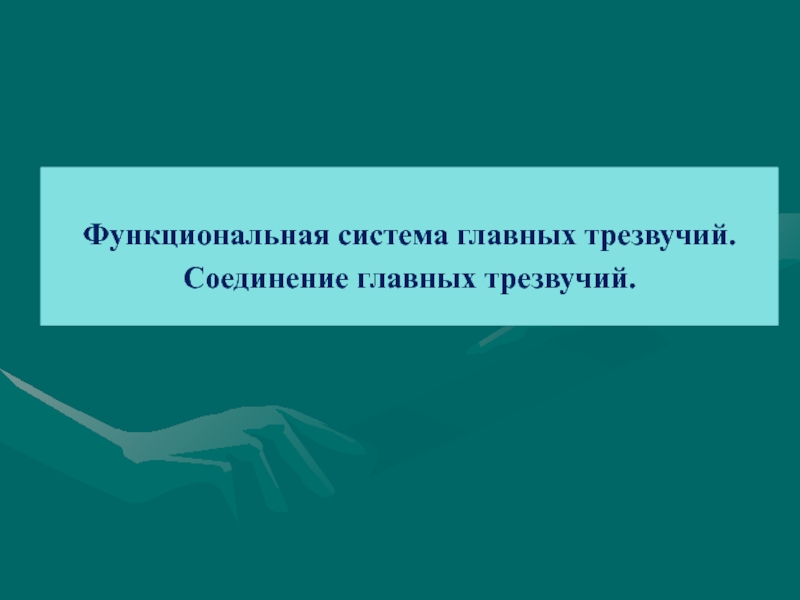Слайд 1Voice Coaching
Kuznetsova A, AIN-1701
Слайд 2People are noise making machines. We have evolved the anatomy
to create meaning by vibrating air. It is helpful for
an actor to understand the mechanics of their voice in order to train most effectively.
All human sound production starts with breathing. Our diaphragm muscle pulls downward and our rib cage expands outward, allowing our lungs to fill with air that can be funneled upward to vibrate our vocal chords.
Actors use their voice to project outward emotion, matching it with body movements to interpret text and present a story. Because of this, voice cannot be thought of as an isolated skill, but rather a skill that requires coordination of the entire body. And if an actor has problems with his voice or accent for the role, he could take the services of a voice coach.
Слайд 3A voice coach is a professional who works with anyone
who wants to improve their voice, either for speaking or
singing. There are many ways that one can improve one's voice, either by minimizing an accent to appear on television, learning a different accent to speak in a role in a performing role, or improving one's singing ability, just to name a few. A voice coach is typically a professional who has studied voice training.
Слайд 4Exercises and other important things
Breathing
All vocal sounds start with a
breath, so good breathing habits are the base of a
good voice. Think of the each breath as traveling down into your lungs with each inhale and pushed up each time you exhale. Actors should remain relaxed throughout breathing and speaking, seeking to reduce tension in the neck, shoulders, jaw, back and stomach.
Posture
The best voice is produced when body posture is erect yet relaxed. Throughout breathing and voice exercises, the spine should be straight, the head facing forward and the crown of the head parallel to the ceiling. This posture supports the body’s respiratory system so that it can function smoothly.
Слайд 5Warm-Up Exercises
Before beginning voice exercises, a good warm-up routine is
important. A long and slow warm-up allows the muscles to
activate and can reduce strain during a performance or exercise session.
Actors can start by stretching their tongue. Stick the tongue out, point up and down. Brace the tongue behind the front bottom teeth and push the center out. Massage the muscles of the jaw and face to further reduce tension. Stretch the neck lightly by leaning to the sides, front and back.
Start making sounds quietly and slowly. Stick your tongue out and pant like a dog to open up your breath. To reduce the tension in the lips and cheeks, flap your lips by blowing air and producing a “BEE” or BRR” sound.
Yawn widely to stretch the jaw. Smile while you are yawning. Make a sighing sound for as long as you can.
Слайд 6Other Voice Exercises
Shake out tension and connect the body to
the voice with this simple exercise…
Bend at the waist and
let your arms hang freely. Begin shaking your arms while making the “AH” sound. As you stand, shaking body and arms, travel through your entire vocal range until you are standing, shaking your arms at your sides. Repeat with all the vowel sounds.
Next, work out your voice by making an “MMM” sound with your lips closed. Maintain the “MMM” sound steadily for as long as you can. Next, open your mouth and release an “A.” Think of shooting the “A” across the room like an arrow. Repeat with all vowel sounds.
Finally, work on articulation with some fun tongue twisters:
Whether the weather is cold, or whether the weather is hot, we’ll be together whatever the weather, whether we like it or not.
Serious Sally sells seashells on the salty seashore.
Red leather, yellow leather, red leather, yellow leather…
Слайд 7Ralph Fiennes
Rafe Fiennes speaks Russian very well. And it turned
out thanks to filming in the film "Two women" based
on the play by Turgenev. The actor is determined to learn to speak normally in the writer's native language. According to Kinopoisk, Rife worked with voice coaches six days a week, and after that carefully analyzed each phrase of the script together with the director Vera Glagoleva. And even at the end of this work, he could not stop and with the fervor of an excellent student performed homework: honed pronunciation of complex sounds.
Слайд 8Clark Gable
Clark Gable is an example of how an actor’s
voice can be improved through proper training and understanding. Before
Clark Gable was known as “The King of Hollywood” he spent years rigorously training his voice. His naturally high-pitched voice was lowered with better posture, body control, and breathing. Eventually, he developed the famous baritone that uttered one of Hollywood’s most iconic lines of dialogue, “Frankly my dear, I don’t give a damn.”
Слайд 9Examples
https://youtu.be/a42axivi5Og
https://youtu.be/qwptXx_2Fq4
https://youtu.be/8sQoYa8TptI
